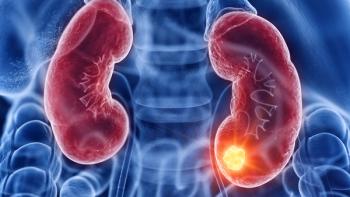
Two-Part Questions Can Improve Cancer Care in LGBTQ Patients
Getting an accurate history – and doing so in a comfortable and non-judgmental way – can improve cancer care for LGBTQ patients.
Evidence suggests that lesbian, gay, bisexual, transgender, and queer (LGBTQ) people have been facing delays and disparities in cancer care for years. When Kelly S. Haviland, PhD, FNP-BC, heard of a transgender man having his breast cancer diagnosis delayed, her passion was sparked, and she changed her PhD dissertation to focus on this population.
“While I don’t have the experience of being a trans person, I have the experience of being a lesbian woman, presenting to health care with certain disparities as well,” Haviland, a nurse research scientist and family nurse practitioner at Memorial Sloan Kettering Cancer Center, said.
That was in the early 2000s, and while LGBTQ issues are more recognized than ever, there is still more room for improvement. Haviland discussed the ways LGBTQ cancer care can be improved in a recent interview with Oncology Nursing News.
Oncology Nursing News: Has the care of LGBTQ individuals improved in the past 2 decades? And what more needs to be done?
Haviland: I think it's complicated. And on the one hand, the recognition that disparities and marginalization exist in these populations is becoming more forthright. And at the same time, there are over, I think, 400 different legislative policies that have been brought forth just this year against transgender persons. So I think while we see issues are becoming more discussed, we also see many laws and many legislative policies that are coming into play that are prohibitive. I think it's a difficult answer.
I do think that we have a long way to go in implementing and integrating sexual and gender minority education throughout all our nursing, physician, assistant physician, associate, and physician colleague’s education. And I know while we need to have specific courses that outline disparities in LGBTQ populations, we also need to integrate LGBTQ patients into our language. For example, when we're doing case reviews, or case studies, part of the demographics should naturally just be some non-heterosexual and some non-cisgender person. That's part of where we need to go.
In addition to providing a safe environment [we need] research. We don't collect federal research, for the demographics of sexual orientation and gender identification. So we don't know numbers; we have some data with some of these national registries, but the SEER [Surveillance, Epidemiology, and End Results Program] doesn't collect sexual and gender minority research. So we don't know what numbers we have in our general population for risk factors for cancer surveillance, for cancer prevalence. We have smaller studies and some state-based studies and … data from the CDC. So we can make inferences based on those data. But we don't have numbers like we do for the heterosexual and cisgender populations. So I think that's another area that we really need to be able to look into and open up for us to assess and really see what's happening (to create) safe and welcoming environments in our institutions and our clinical arenas.
What does a safe and welcoming environment look like?
Having a welcoming environment means having physical representation of different types of people. And we're not just talking about same-sex couples or transgender persons, but all different people. Looking at the intersectionality of not just gender, sexual orientation, but race, ethnicity, and cultural diversity also is so important. And with those ideas in mind, ensuring that we are creating individualized, personalized cancer care to every being. That entails asking about sexual orientation and gender identification, making sure our electronic medical records have sex assigned at birth and gender identity.
How can nurses and other clinicians become more comfortable with having those conversations with patients?
An organ inventory is a great way to be able to really assess what screenings a person may need. For example, do you have a uterus? And that can be for someone who had a hysterectomy for a multitude of reasons, not just for a transgender person. So do you have ovaries? Do you have a uterus? Do you have a prostate? What the organs that you want to assess for a cancer risk? Looking at this as an organ inventory, and saying, ‘these are some questions I'm going to ask you, and they may seem a little funny at first. It may seem obvious, but we're really trying to make sure we give everyone individualized care.’
When we're asking about sex and gender, these should be 2-part questions. The first can be ‘what is your sex assigned at birth?’ And the second one can be ‘what is your gender?’ And so that's how it's recommended that we collect data, and that we track these data in electronic medical records. So where someone may have been assigned female at birth, their gender is male, we might then be more apt to ask those questions about having a uterus, having ovaries and having breast tissue. There are many things leading into the next question. [Clinicians should also ask] about sexual orientation, and if that person says, ‘Well, what do you mean?’ one can say, ‘Well, some people, are heterosexual, some people identify as a lesbian, some people identify as bisexual,’ and we can explain those things in a comfortable way and say that any of these are for me to be able to provide you the best information to screen for cancer. Or in whatever arena we're working.
There are many things that we need to keep in mind when talking about cancer risks and screening.
Newsletter
Knowledge is power. Don’t miss the most recent breakthroughs in cancer care.

























































































